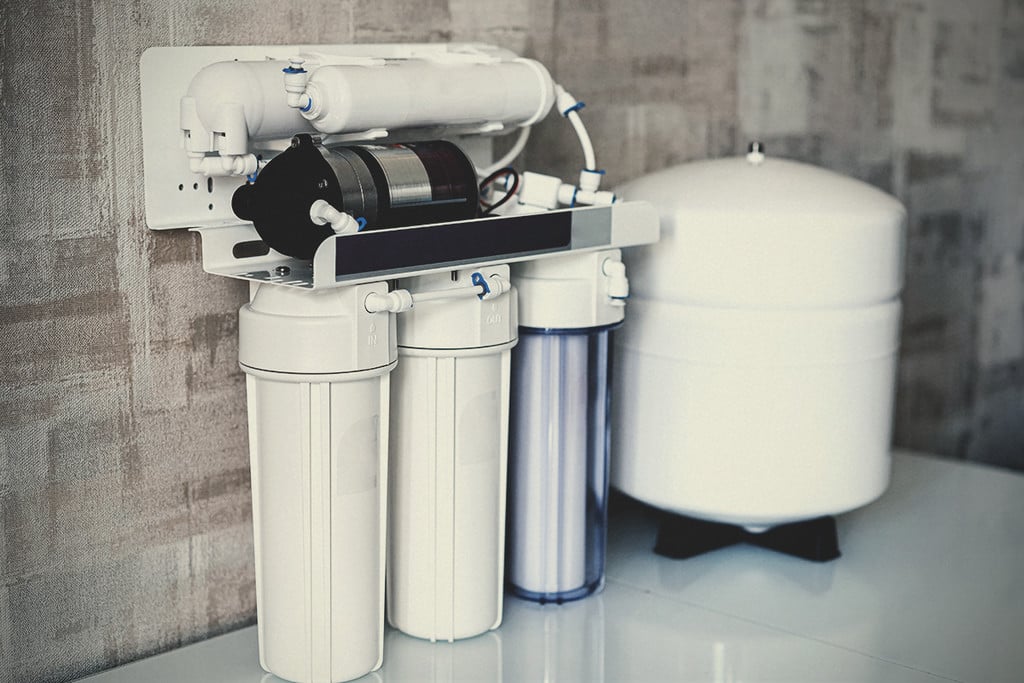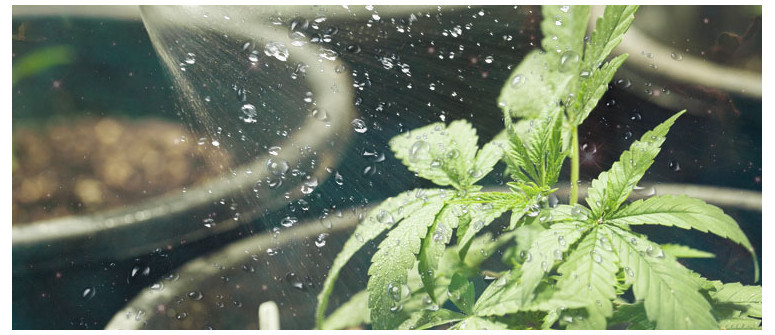What Is Reverse Osmosis Water?
Reverse osmosis water is a type of highly filtered drinking water that has passed through a special process, called reverse osmosis, to remove a large percent of contaminants and salt content. The process involves passing the water through a semipermeable membrane, which filters out 95-99% of impurities and dissolved salts like chloride and sulfates.
Reverse osmosis mainly serves to reduce agricultural pesticides, runoff pollutants, natural minerals and other harmful compounds that can all be found in regular tap water.
The Benefits Of Reverse Osmosis For Cannabis
Reverse osmosis (RO) water is increasingly becoming the water of choice for cannabis growers looking to ensure their marijuana plants get the best possible care. While some may view using RO water as depriving your weed plants of essential minerals, it can actually be quite beneficial in helping to fine tune nutrient levels with precision.
By starting with a pure water sample, experienced growers have greater freedom in adding particular nutrients such as magnesium, calcium, and NPK for optimal plant development.
In contrast to regular city water or tap water, which includes a different mineral profile and requires testing in order to be able to accurately add nutrients, reverse osmosis process holds great advantages for cannabis cultivation.
Without the presence of impurities, contaminants and salts, it allows one to control nutrition control exactingly through a simple application of precise dosing into pure RO short-circuiting potential overfeeding traps that sprung from attempting to dial in nutrient levels on top of already-saturated waters.
Ultimately allowing you to optimize feeding for unmatched flower production potential and quality leaving no room for disappointment!
How Reverse Osmosis Systems Work
Reverse osmosis is a process whereby contaminants are filtered out of water through the use of a semipermeable membrane such as polyester web, microporous polysulfone layer and a polyamide barrier. It works by forcing the water sample through the membrane, leaving impurities behind and delivering clean drinking water both on large scale—such as for the masses—and small scale, in people's homes.
In areas where tap water contains high levels of fluoride or chlorine, many people have reverse osmosis filters already attached to their home filtration systems in order to purify their drinking water.
Reverse osmosis is an incredibly efficient process that not only helps deliver clean drinking water on massive scales, but also allows individuals to convert contaminated tap water into something safe and drinkable. Of course, this type of system wouldn’t work if it wasn't properly maintained on all levels.
The membranes must be regularly checked and replaced to continue providing effective filtration performance, ensuring those using the system at home or within larger production facilities get optimal results every time. Needless to say, reverse osmosis remains one of the most popular and widely used methods for purifying your drinking water.
Cannabis Growing: How To Use Reverse Osmosis Water
Reverse osmosis (RO) water is an ideal choice for cannabis growers, especially those cultivating from feminized seeds or autoflower seeds, that want to fine-tune their nutrient levels and create a clean growing environment. This pure water is generated by passing Ordinary tap water through semipermeable membrane which filters out contaminants, minerals, and other substances to create an engineered balance of elements.
RO water provides the opportunity to adjust the nutrient content to meet the specific needs of their weed plants; an exactness that could not be achieved with typical run-of-the-mill tap water.
Even with all its benefits, some weed growers may still choose to steer away from reverse osmosis since it eliminates natural aspects of cultivating cannabis. It’s true that RO water is more suitable to those with advanced grower background who know exactly what they need in terms of mineral levels and nutrient strength.
For the novice grower, avoiding RO may be the smarter play as it can increase complications without providing many advantages over other workable options like deep well natural runoff or aerated rainwater collection systems.
Nutrients And Reverse Osmosis
Reverse osmosis is a useful process for creating optimal water conditions when growing cannabis. The end result of water that has gone through reverse osmosis is essentially pure, with virtually all minerals and impurities removed.
This separation also strips necessary nutrients that cannabis needs, but this allows growers to add nutrients in predetermined levels without the added presence of impurities like fluoride or chlorine.
Reverse osmosis also helps to regulate pH levels which are essential for optimal cannabis plant growth, the desired pH level for soil-grown cannabis is 6.5, which reverse osmosis water typically falls close to at around 6.0 – 6.5.
While this is useful as a starting point, it's important to measure the pH after adding nutrients, since this can change the reading significantly from its original benchmark status.
Watering Frequency
Watering frequency is an important part of taking care of cannabis plants. A general guideline is to water them every two to three days, but depending on the circumstances adjustments may be required to ensure the health of your cannabis plants.
When using reverse osmosis water it’s especially important to watch the levels of fertilizer being added as too much of it at once can negatively affect the plant. Instead, alternate with regular water and add nutrients in small doses over a period of time for best results.
This will prevent over-nourishing your plants and keep them healthy. Watering your cannabis plants on a regular basis is a key factor in ensuring that they thrive for many cycles. But when using reverse osmosis water, be sure to exercise caution and follow best practices as outlined above in order to guarantee optimal root growth.
Is a Reverse Osmosis Water System Good for Cannabis Plants?
Reverse osmosis water systems provide an excellent filtration method to make sure your cannabis plants get the cleanest and safest water possible. By removing impurities and contaminants, RO systems ensure that even tap water can be used without risk of poisoning your plants.
However it also comes at a price: all minerals in the source water also get removed, leaving the water with a zero mineral profile. This means that the RO system does not necessarily provide “good” for your plants on its own - in fact it is likely worse than normal tap water.
Fortunately you can take steps to create a balanced nutrient solution for you plants from this starting point. You can achieve this by adding small amounts of common plant nutrients elements such as nitrogen, phosphorus, and potassium back into the RO water to bring it back up to optimal levels for cannabis growth.
Testing regularly with accurate hydroponic nutrient meters will help you maintain these levels as your garden progresses. With regular testing and adjustments within safe limits you can use reverse osmosis systems to ensure your garden has clean and well balanced nutrient levels throughout its life cycle without any extra expense or hassle.
How To Store Reverse Osmosis Water
Reverse osmosis water is pure, which makes it an excellent choice for growing projects. However, it should not be stored for longer than two years. If you’re using it regularly for your projects, this should not be an issue.
When storing reverse osmosis water, make sure to keep it in a cold and dark environment such as a pantry. Keep away from light and warmth - exposure to either can cause the growth of algae or fungus. If possible, store the water in dark-colored containers that are airtight to prevent contaminants from getting inside the container.
Always fill up your containers fully - leaving some empty space can cause microbes to grow in the empty area. Additionally, label each container clearly so you know exactly what’s inside them - this keeps you from accidentally drinking old RO water meant for plant marijuana roots! With proper storage techniques like these, you’ll be sure to enjoy clean RO water at all times.


 Français
Français 
